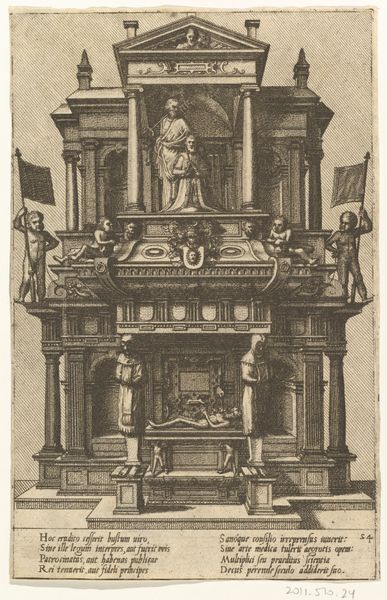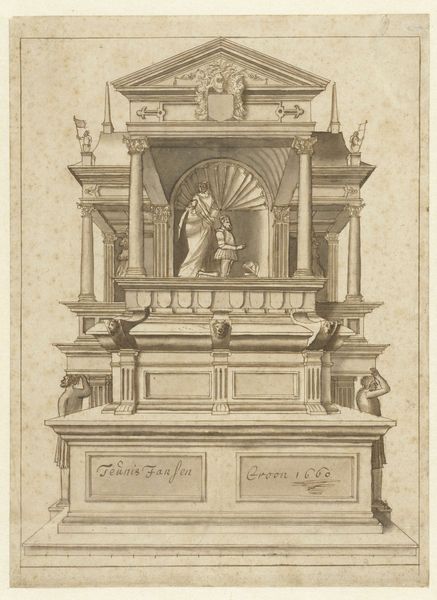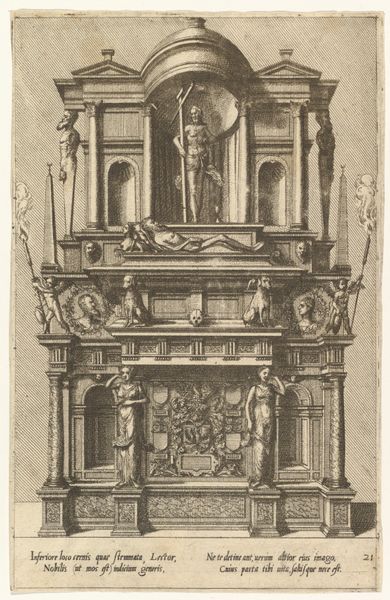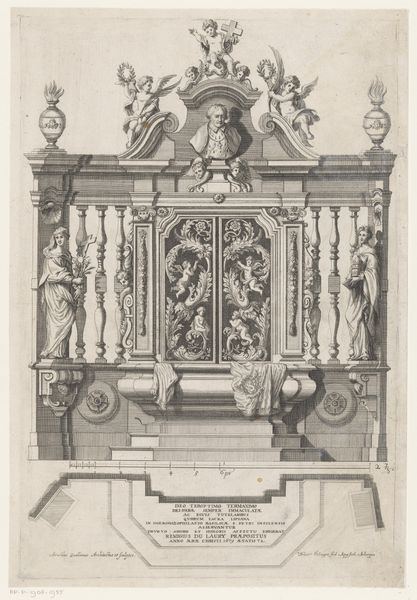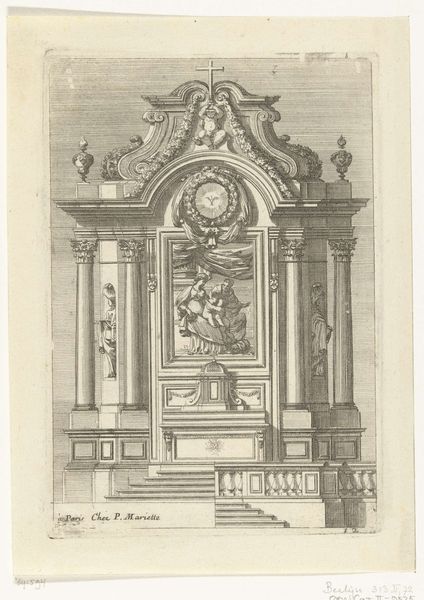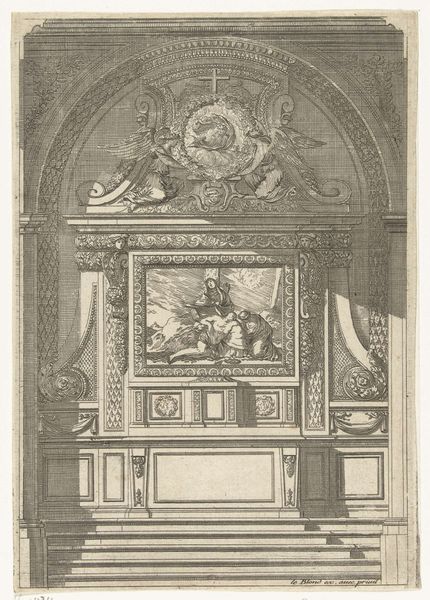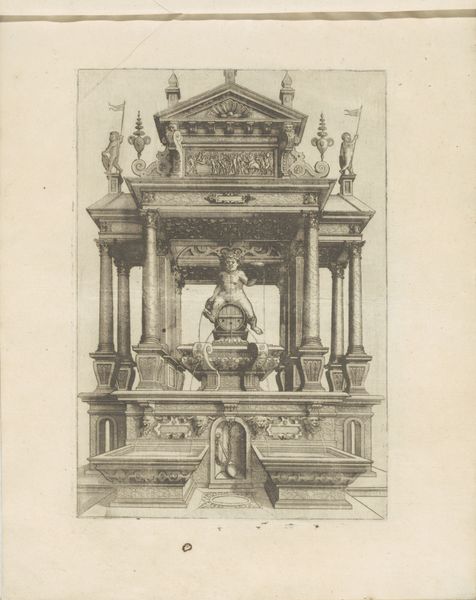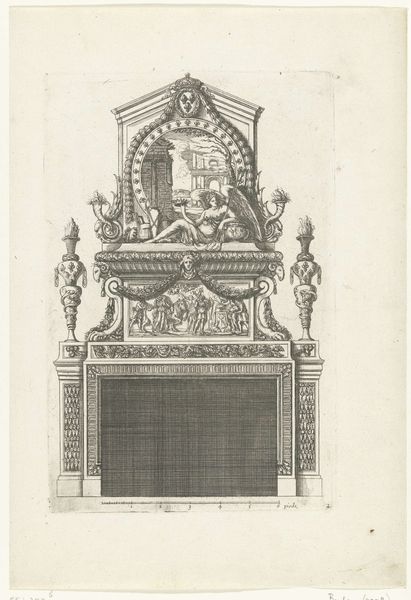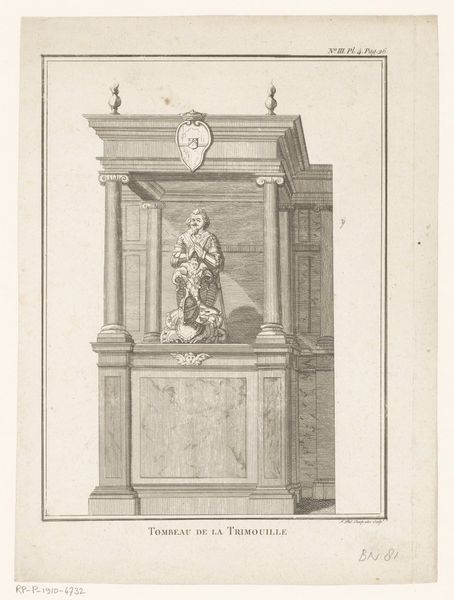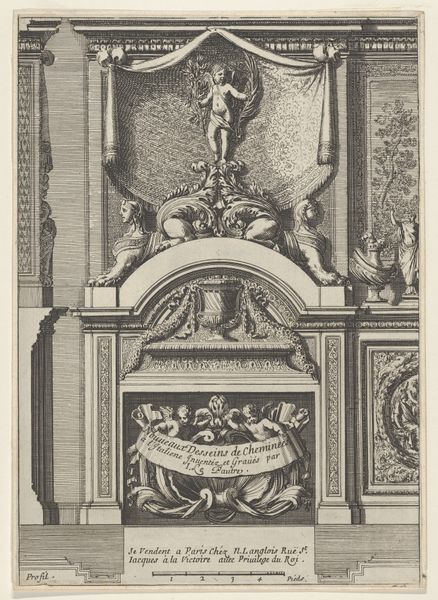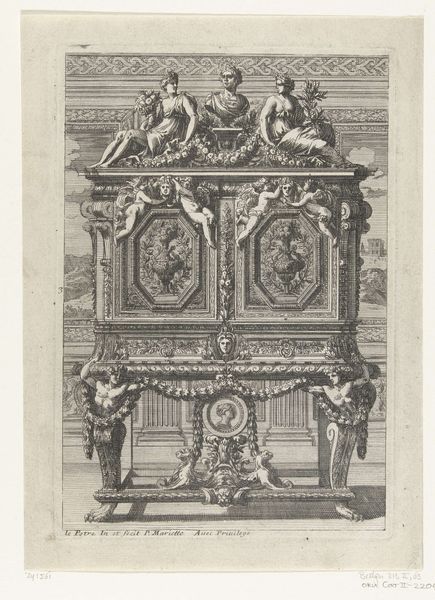
drawing, print, engraving, architecture
#
drawing
# print
#
11_renaissance
#
arch
#
history-painting
#
engraving
#
architecture
Dimensions: sheet: 9 x 5 7/8 in. (22.8 x 15 cm)
Copyright: Public Domain
This print, Cœnotaphiorum (2), was made by Hans Vredeman de Vries, probably toward the end of the 16th century. It's done in ink on paper, using a technique called engraving. Lines are incised into a metal plate, which is then inked and printed. This process is well-suited to architectural renderings, because of the precision it affords. Just look at the regularity of the lines, the sense of three-dimensionality that is so powerfully conveyed. We see a complex structure that imitates marble. But it’s all an illusion, created by the engraver’s skill. The inscription at the bottom suggests the kind of labor involved in the production process. Consider, too, that prints like this were a key technology in the early modern period. They enabled the rapid distribution of images, influencing design and taste on a mass scale. This print stands as an example of how 'low' and 'high' art can be powerfully combined. The means of production are what give the artwork significance.
Comments
No comments
Be the first to comment and join the conversation on the ultimate creative platform.
